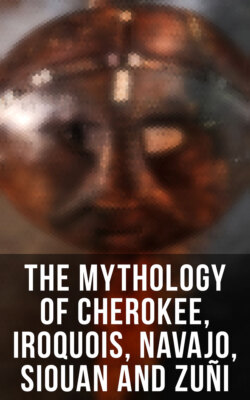Читать книгу The Mythology of Cherokee, Iroquois, Navajo, Siouan and Zuñi - James Mooney - Страница 56
На сайте Литреса книга снята с продажи.
Modern Education and Culture
ОглавлениеAfter the establishment of the United States Government a number of Christian and lay bodies undertook the education and enlightenment of the aborigines. Until 1870 all Government aid for this object passed through the hands of missionaries, but in 1775 [Transcriber's note: 1875?] a committee on Indian affairs had been appointed by Congress, which voted funds to support Indian students at Dartmouth and Princeton Colleges. Many day-schools were provided for the Indians, and these aimed at fitting them for citizenship by inculcating in them the social manners and ethical ideas of the whites. The school established by Captain R. H. Pratt at Carlisle, Pa., for the purpose of educating Indian boys and girls has turned out many useful members of society. About 100 students receive higher instruction in Hampton Institute. There are now 253 Government schools for the education of Indian youth, involving an annual expenditure of five million dollars, and the patient efforts of the United States Government may be said to be crowned with triumph and success when the list of cultured Indian men and women who have attended these seminaries is perused. Many of these have achieved conspicuous success in industrial pursuits and in the higher walks of life.
1. The Migration from Shinar, by Captain G. Palmer (London).
2. Payne, History of the New World, ii. 87-88, summarizing the investigations of Peschel and Tylor.
3. Rafn, Antiquitates Americana, xxix. 17-25.
4. See Eric Rothens Saga, in Mueller, Sagenbibliothek, p. 214.
5. Bulletin 30, Bureau of American Ethnology.
6. Footprints of Vanished Races, p. 18.
7. Bulletin 30, Bureau of American Ethnology.
8. See the map, p. 361.
9. This name has been adopted to distinguish the family from the tribal name, 'Algonquin' or 'Algonkin,' but is not employed when speaking of individuals. Thus we speak of 'the Algonquian race,' but, on the other hand, of 'an Algonquin Indian.'
10. Bulletin 30, Bureau of American Ethnology.
11. Brinton, Myths of the New World.
12. Bulletin 30, Bureau of American Ethnology.
13. J. G. Kohl, Kitchi-gami (1860).
14. Perhaps their personal or tribal totems. See "Totemism," pp. 80-86.
15. Hence the expression 'Indian file.'
16. Historical and Statistical Information respecting the Indian Tribes.
